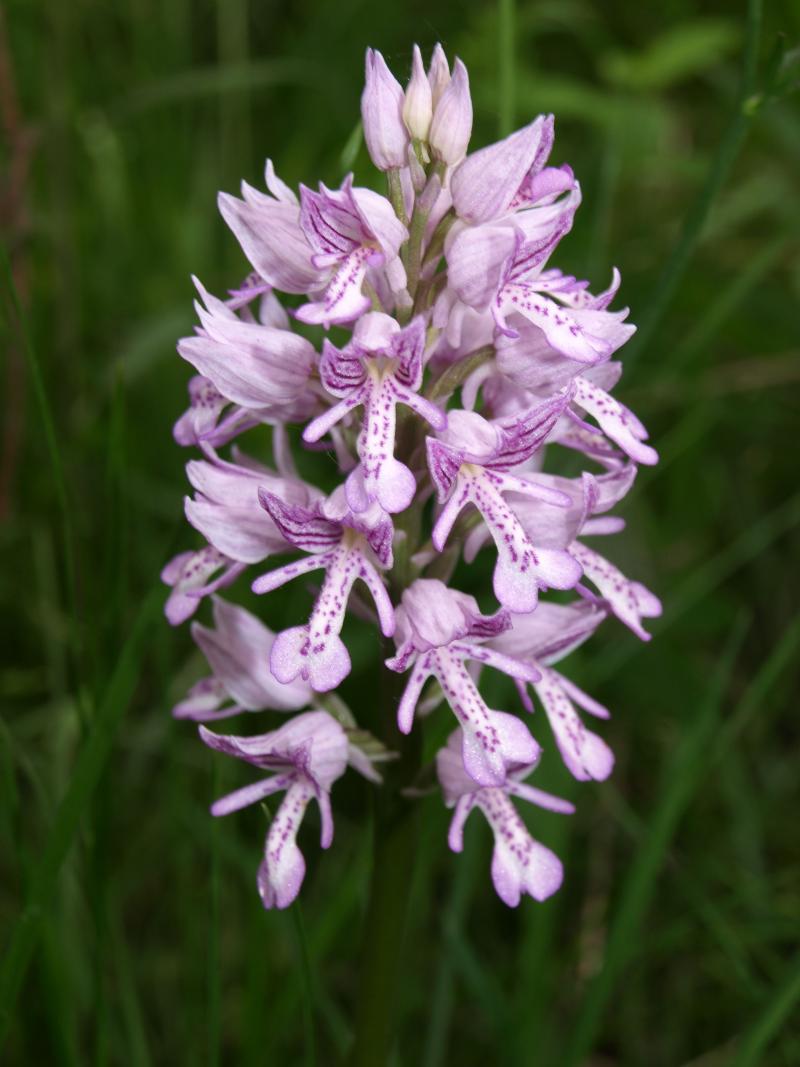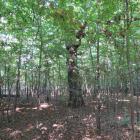Wood pastures are fundamental aspects of the European cultural landscape. In the research behind this article, our aim was to discover the biocultural values and history of a particular wood pasture. The study area, Nyíresi wood pasture, is located in the village of Pusztakovácsi (Somogy County, Hungary).
First, we completed a botanical survey. Today, the Nyíresi wood pasture is covered by spontaneous shrub and forest-cover and plantations. Currently, about 60 percent of the former wood pasture is recognized as an official forest area. The open habitat type can only be observed in parcels used by the new owners as a hay meadow (about 30 percent). As a relic of the open, mosaic-like grazed habitat, four protected plant species occur in the area (Lilium martagon, Orchis militaris, Neottia ovata, and Ophioglossum vulgatum). These species will disappear entirely if grazing management does not continue. In the secondary forest that has grown up there remain a few ancient trees. These individuals not only have a high biocultural value, but also tell the tale of the area’s formerly open landscape and traditional livestock grazing practices.
Next, we analyzed historical maps, archive data, and oral history. A historical map shows that the area was pasture in the eighteenth century. Until the end of World War II, the pasture was owned by the landlord and held as a common, respectively. Some 300–350 cattle grazed the land at the time.
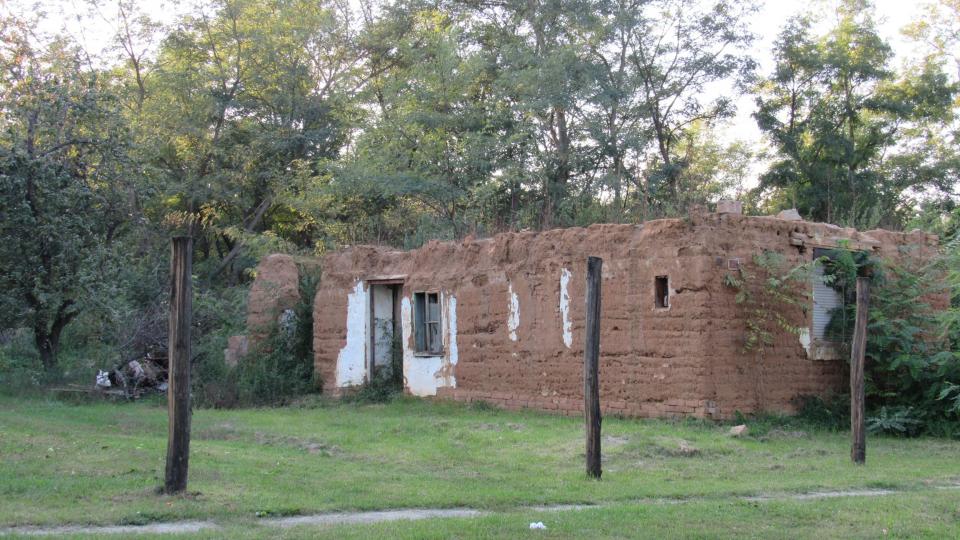
Abandoned house of a family who kept cattle and sold milk in the village, photographed in 2017. The population of the village was 1,633 in 1930. Since the 1970s, the number of inhabitants (then 1,410 persons) has radically declined. The population was 945 in 1990 and is currently 847.
Abandoned house of a family who kept cattle and sold milk in the village, photographed in 2017. The population of the village was 1,633 in 1930. Since the 1970s, the number of inhabitants (then 1,410 persons) has radically declined. The population was 945 in 1990 and is currently 847.
Photograph by Z. T. Samu, 2017.
 This work is licensed under a Creative Commons Attribution 4.0 International License.
This work is licensed under a Creative Commons Attribution 4.0 International License.
Starting in 1949, Soviet agricultural cooperatives were organized in the village. In the 1960s, livestock numbers owned by local people dropped significantly. The remaining cattle, approximately a hundred head, were still driven to the wood pasture. At that time, 99 percent of local families had household livestock. People made efforts to grow their own food, but cooperative and private goods produced in the village were forwarded into the central governmental distribution system. In 1956, after the revolution, the government provided an opportunity to sell surplus produce grown on household farms in addition to Soviet collection quotas. People in the village could purchase from the farmer and drink the milk of the cows grazing the local wood pasture directly. This measure meant a livelihood for producers and a lifeline for consumers, because limited food was available in the shops. In spite of the restriction in the number of livestock allowed to be kept in private ownership, income from household animals and grazing provided families a firm basis for sustenance. In fact, it could exceed the amount earned in full-time employment.
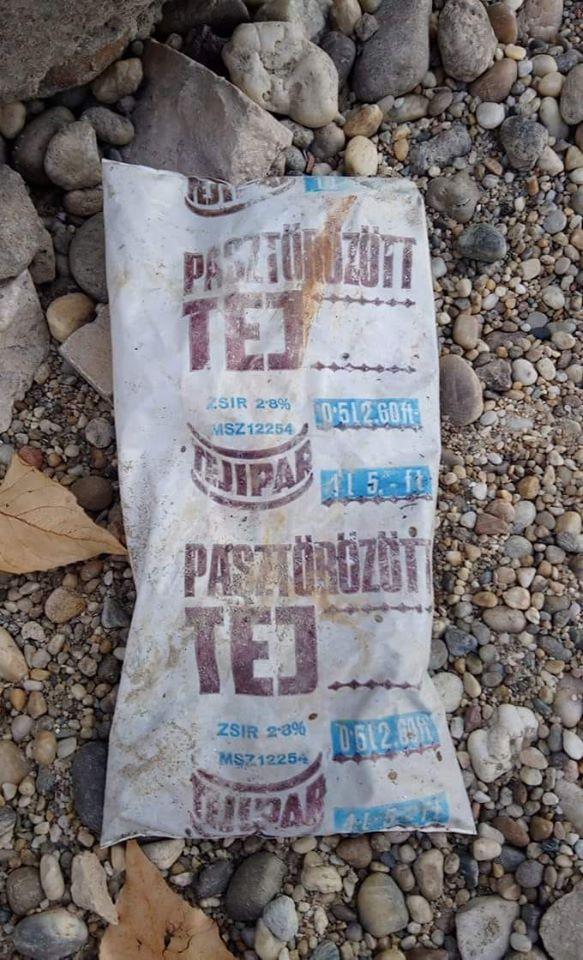
“Plastic-bagged milk” was the turning point, it turned out. Local resident and researcher Z. T. Samu recalls how the pastures and practice of grazing on the commons were abandoned in his home village Pusztakovácsi. One of the early plastic bags for milk, from 1973. This bag was found on the shore of Duna in 2018 by Donát Gyula Juhász.
“Plastic-bagged milk” was the turning point, it turned out. Local resident and researcher Z. T. Samu recalls how the pastures and practice of grazing on the commons were abandoned in his home village Pusztakovácsi. One of the early plastic bags for milk, from 1973. This bag was found on the shore of Duna in 2018 by Donát Gyula Juhász.
Photograph by Donát Gyula Juhász.
 This work is licensed under a Creative Commons Attribution 4.0 International License.
This work is licensed under a Creative Commons Attribution 4.0 International License.
The flourishing of the domestic dairy industry and achievements in packaging technology resulted in more and more plastic-wrapped food items in Hungarian shops from the 1970s onward. This was highlighted in an article published in a regional newspaper of the Hungarian Socialist Workers’ Party (Délmagyarország) in 1972: “Plastic bagged milk was introduced in 1971 and is produced by a bagging machine made in the GDR, which is able to pack 2,200 liters of milk into plastic per hour.” They reported that “in Szeged, a larger town in Hungary, milk consumption was 57% from plastic bags, 24 % from glass bottles, [and] 19 % from cans and jugs in 1972.”
In the study village, plastic-bagged milk was also sold in the local shop, beginning in the early 1970s. According to a local resident interviewed in 2019 (Mrs. F. L.), as plastic bagged milk appeared in the local shops, folks did not want farmers’ milk anymore. For convenience and economic reasons, people started to purchase food in the local store and to prefer packaged goods as novelty items. According to locals, the preference for shop-bought milk was mainly due to the elimination of the work required to process raw milk, which required a lot of attention and time (cooking, filtering, storage, cleaning equipment, time constraints on procurement, etc.). In addition, the bagged milk was significantly cheaper as the cost was regulated by the state. People tended to tolerate the deterioration of the milk’s nutritional value and quality. As a result of these changes, they also could no longer make home-made dairy products. The opinion of locals about the taste of bagged milk was divided.
In the second half of the 1980s, households were able to sell less and less milk to locals, while wholesale prices declined continuously. Families were deprived of their steady incomes and started to sell off their dairy cows, so they stopped using the pasture. From 1987 on, privately owned livestock were no longer driven onto the Nyíres wood pasture, due to the diminishing head counts.
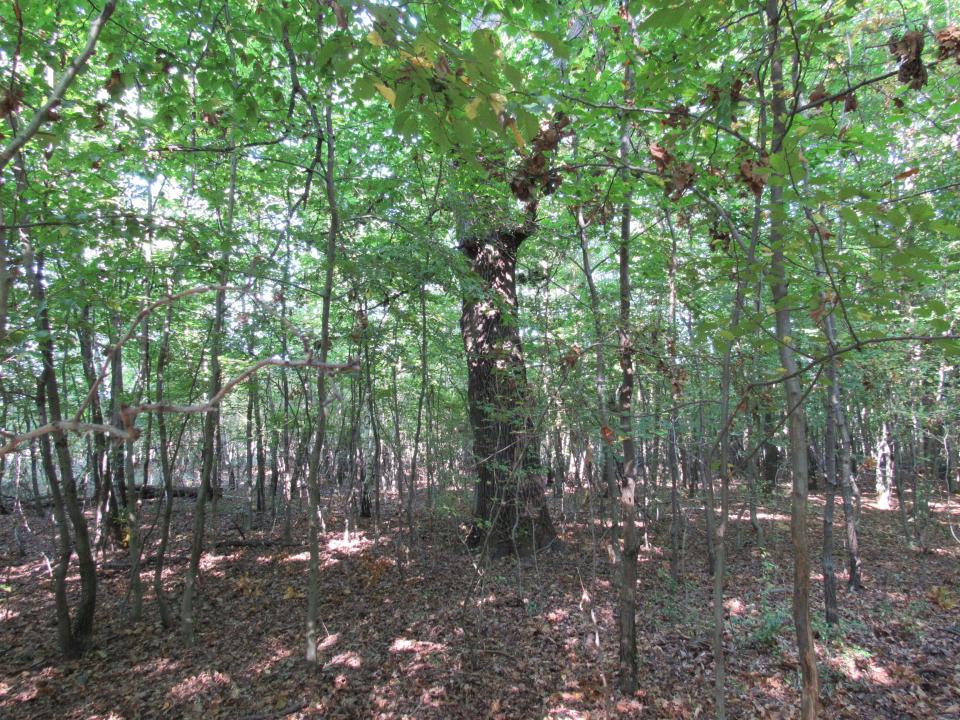
A large, ancient tree of the former wood pastures hides in the secondary forest. Pusztakovácsi, Hungary.
A large, ancient tree of the former wood pastures hides in the secondary forest. Pusztakovácsi, Hungary.
Photo by Z. T. Samu.
 This work is licensed under a Creative Commons Attribution 4.0 International License.
This work is licensed under a Creative Commons Attribution 4.0 International License.
These changes accelerated emigration from the village to the city in the 1980s. From that point on, the community became deeply marginalized. More and more houses stood empty, a process that continues today. After the 1990s, ownership of the Nyíresi wood pasture was privatized.
Extensive animal husbandry has completely vanished from Pusztakovácsi, and local people no longer intend to keep livestock. Due to their lifestyle changes, they ceased grazing the land and engaging in common livestock management.
From the middle of the twentieth century, land use abandonment has been one of the most influential factors in shaping the European landscape; the same is evident in our study area. The results show how the technology of the plastic bag has influenced biocultural heritage through its impact on local food systems. It acted as an important driver of wood pasture abandonment—which has direct negative effects, in turn, on a protected plant species.
Acknowledgments
Anna Varga was supported by the NKFIH PD 135651 project. We are thankful for the local people’s participation in the research and for Susannah Candles’s language editing.
How to cite
Samu, Zoltán Tamás, Judit Bódis, and Anna Varga. “Plastic Milk Bags and the Abandonment of a Hungarian Wood Pasture.” Environment & Society Portal, Arcadia (Spring 2021), no. 2. Rachel Carson Center for Environment and Society. doi:10.5282/rcc/9203.
ISSN 2199-3408
Environment & Society Portal, Arcadia
 This work is licensed under a Creative Commons Attribution 4.0 International License.
This work is licensed under a Creative Commons Attribution 4.0 International License.
2021 Zoltán Tamás Samu, Judit Bódis, and Anna Varga
This refers only to the text and does not include any image rights.
Please click on the images to view their individual rights status.
- Agnoletti, Mauro. “The Degradation of Traditional Landscape in a Mountain Area of Tuscany During the 19th and 20th Centuries: Implications for Biodiversity and Sustainable Management.” Forest Ecology and Management 249 (2007): 5–17. doi:10.1016/j.foreco.2007.05.032
- Dorondel, Stefan. Disrupted Landscapes: State, Peasants and the Politics of Land in Postsocialist Romania. New York: Berghahn, 2016: 341–394.
- Hartel, Tibor, and Tobias Plieninger. European Wood-pastures in Transition: A Social-Ecological Approach. London: Routledge, 2014.
- Rackham, Oliver. Ancient Woodland, Its History, Vegetation and Uses in England. London: Edward Arnold, 1980.
- Ustaoglu, Eda, and Marcus J. Collier. “Farmland abandonment in Europe: an overview of drivers, consequences, and assessment of the sustainability implications.” Environmental Reviews 26 (2018): 396–416.
- Varga, Anna, Péter Ódor, Zsolt Molnár, and János Bölöni. “The History and Natural Regeneration of a Secondary Oak-Beech Woodland on a Former Wood-Pasture in Hungary.” Acta Societatis Botanicorum Poloniae 84 (2015): 215–225.
- Zeunert, Joshua, and Tim Waterman, eds. Routledge Handbook of Landscape and Food. London: Routledge, 2018.


